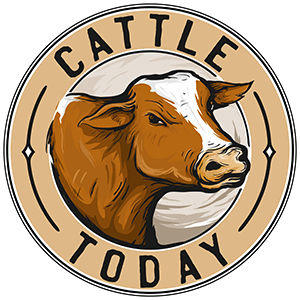HerefordSire
Well-known member
This could be a fundamental issue in the cattle industry. I wanted to point this out just in case there is any truth to it.
Longevity in cows seems to be very important. If I pay $1-2K, or more or less, for a good cow, I may depreciate her every year so I can recapture my cost mainly due to the fact that she will generally be worth less each and every year as her teeth wear out. Therefore, if my cost basis becomes zero as the result of her calving every year, and now all of the sudden she is 15 years old, fully depreciated and still providing a calf every year, the profit margin just for her is larger than other cows that are younger and not fully depreciated. In other words, as long as she calves an average calf every year and she is fully depreciated, more money flows into my pocket.
At this point, we should all agree that as a cow lives longer past a certain length of time, say 10 years of depreciation, she becomes more valuable because she has been fully depreciated as long as she provides an average calf.
So here we are bringing bulls in to breed to our cows. The bull looks great, has great EPD numbers, is proven, but how much information is known about the longevity?
So if I breed a bull to my cows, the future replacement's length of life is dependent upon the bull, because we have already decided the replacement's dam is going to stay, at least one more year to see if she produces a calf. Hopefully, as the replacement advances in years of life, she will always provide a calf to offet her cost. But, the bull that she shares the blood of, will dictate if she will live longer or shorter than her dam and the depreciated term she was assigned.
So here are the main questions concerning the cattle industry:
(1) How many know for sure how long the bull's ancestors lived since there is no EPD number for longevity?
(2) Why would anyone allow a bull to be by their high dollar cows unless the replacements are expected to live longer than their cow?
Longevity in cows seems to be very important. If I pay $1-2K, or more or less, for a good cow, I may depreciate her every year so I can recapture my cost mainly due to the fact that she will generally be worth less each and every year as her teeth wear out. Therefore, if my cost basis becomes zero as the result of her calving every year, and now all of the sudden she is 15 years old, fully depreciated and still providing a calf every year, the profit margin just for her is larger than other cows that are younger and not fully depreciated. In other words, as long as she calves an average calf every year and she is fully depreciated, more money flows into my pocket.
At this point, we should all agree that as a cow lives longer past a certain length of time, say 10 years of depreciation, she becomes more valuable because she has been fully depreciated as long as she provides an average calf.
So here we are bringing bulls in to breed to our cows. The bull looks great, has great EPD numbers, is proven, but how much information is known about the longevity?
So if I breed a bull to my cows, the future replacement's length of life is dependent upon the bull, because we have already decided the replacement's dam is going to stay, at least one more year to see if she produces a calf. Hopefully, as the replacement advances in years of life, she will always provide a calf to offet her cost. But, the bull that she shares the blood of, will dictate if she will live longer or shorter than her dam and the depreciated term she was assigned.
So here are the main questions concerning the cattle industry:
(1) How many know for sure how long the bull's ancestors lived since there is no EPD number for longevity?
(2) Why would anyone allow a bull to be by their high dollar cows unless the replacements are expected to live longer than their cow?
